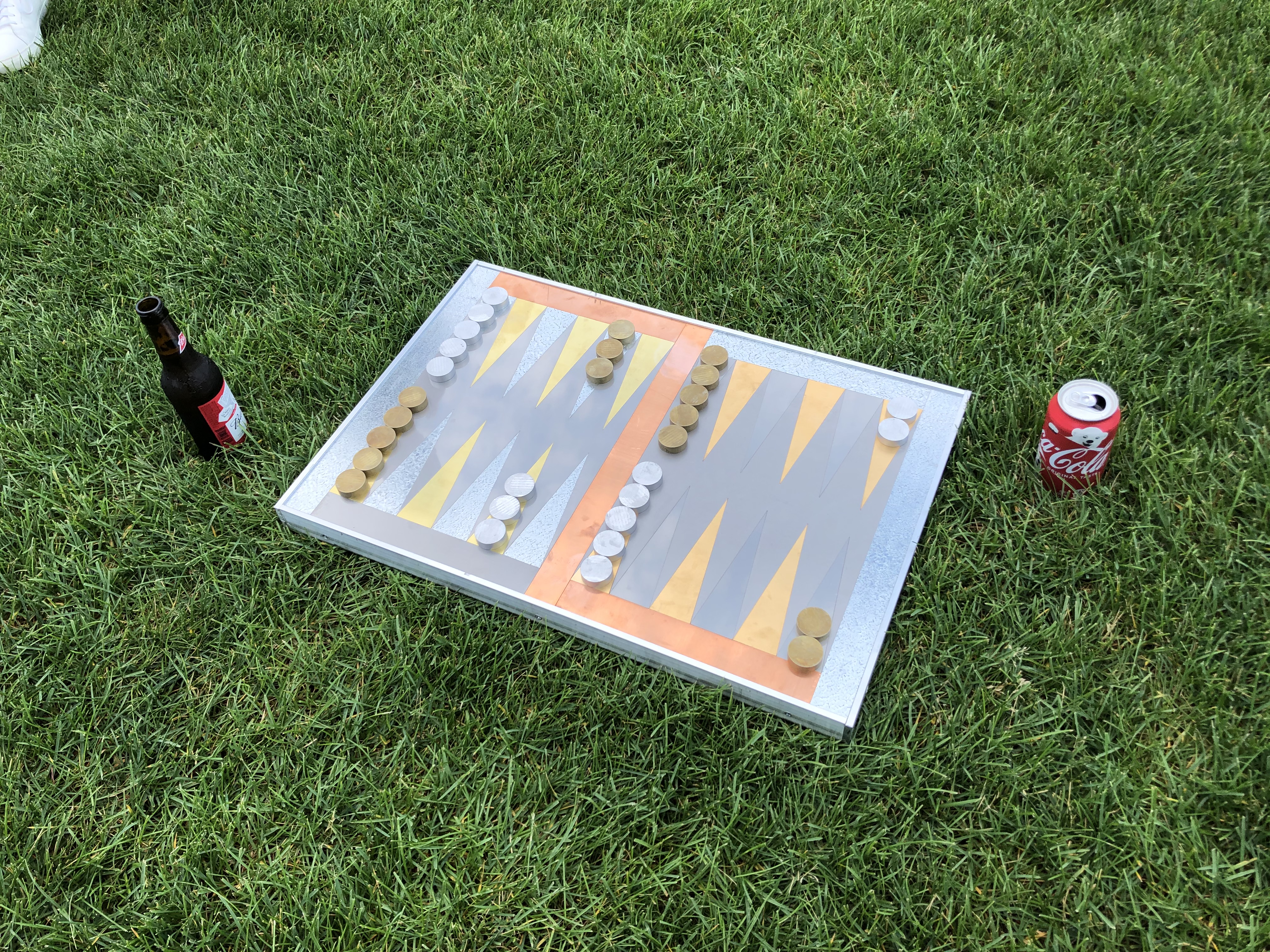
THE SIX SEASONS 1


THE SIX SEASONS 2


THE SIX SEASONS 3


THE SIX SEASONS 4


THE SIX SEASONS 5


THE SIX SEASONS 6


“There are some parts of life that are very complicated, and other parts that are very simple. I try to simplify the complicated parts and complicate the simple ones.”
- Zak Kitnick
- Zak Kitnick
Expanding on the bronze, brass, copper, aluminum and steel marquetries presented in 12 GRAPES, Zak Kitnick's 2019 exhibition at CLEARING Brussels, The Six Seasons features a group of six new smaller scale works. These new works combine a patchwork of six metals to define the backgammon motif. Using this motif as pattern, these pieces hold the potential to simultaneously occupy the space of art and utility. By allowing them to be installed on the wall, or removed and placed on a flat surface to be used, Kitnick implements a form of functionality that challenges our traditional interactions with art.
Within this circumstance, he proposes a reconsideration of our relationship with the familiar object: "I don't know if it’s 'in storage' when it’s on the wall not being used, or if it’s 'in storage' when it's on the table, not being looked at. Either way, they can go either way." By complicating this relationship, Kitnick makes clear the work is the work, less defined by its placement than its potential trajectory, its movement, its evolution. Pushing a decade-long investigation into the boundaries and borders of art, decor, and utility, these works have all the wear and tear of their own production, the marks of their own making, but anticipate the patina to evolve with use. Merging the past, present, and future, they invoke a range of art historical precedents while also alluding to the social, and the desire for the face to face.
"I think this is the first thing that I've made that could be called functional. It reminds me of a quote, I think it was Oscar Wilde… but the quote is, 'I have found that all ugly things are made by those who strive to make something beautiful, and that all beautiful things are made by those who strive to make something useful.' I like thinking about that in terms of this work and it being potentially useful."
- Zak Kitnick
- Zak Kitnick
“If it's the fate of some art to become decoration, then why not attempt to escape that fate by starting with a decorative origin? So that it can re-enter that realm. Rather than start as art and end up as decor, to start as decor and end up as art, and then back. At least to try to introduce an awareness or criticality of that cycle. And it's not as cynical as it sounds; it sounds cynical.”
- Zak Kitnick
- Zak Kitnick